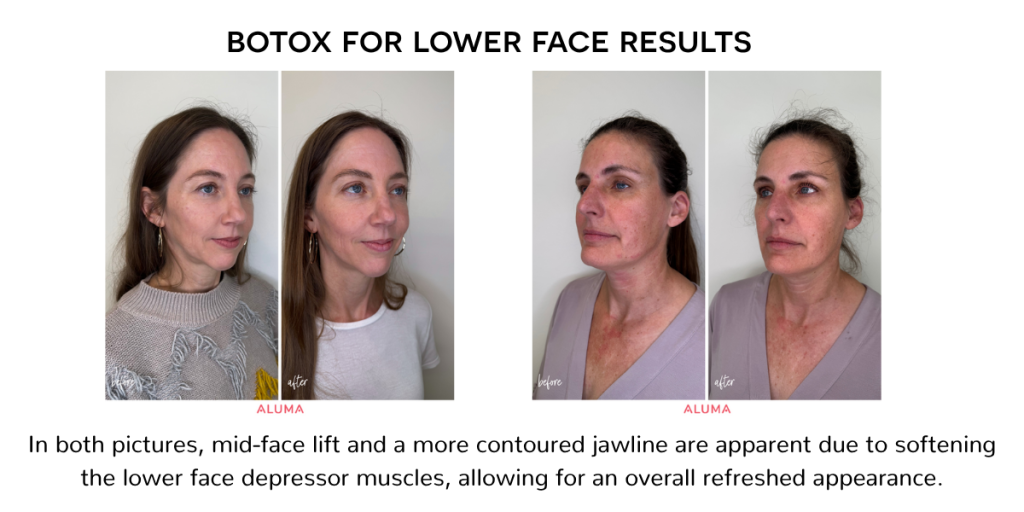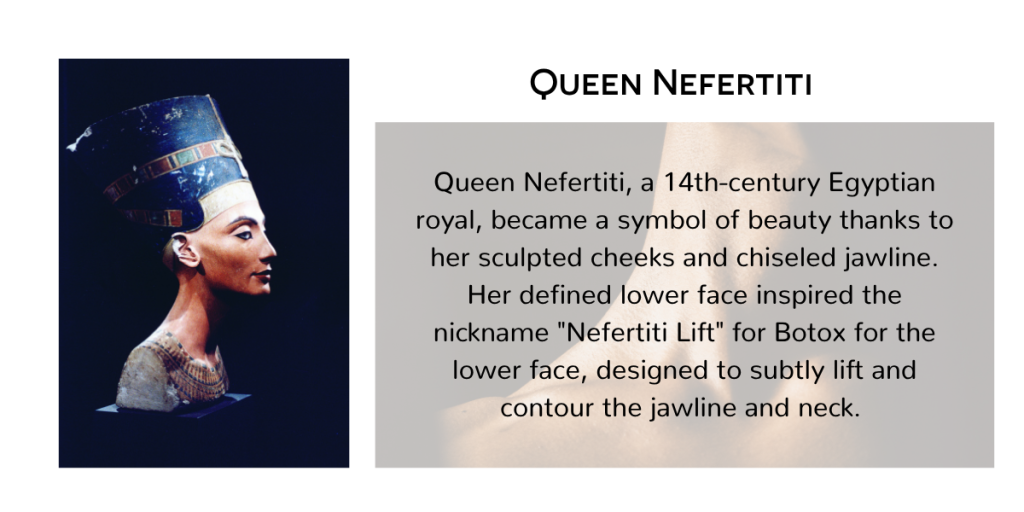I will be candid here: “Yes, for many it can work wonders, but not all.” While many think of Botox for smoothing forehead lines or softening crow’s feet, Botox can also be a powerhouse for lifting the lower face. From subtly defining the jawline to lifting the corners of the mouth, strategically placed Botox injections in the lower face and neck can create a subtle lift in the tissue and increase volume in the cheeks. The key here is candidacy. Read more to find out who benefits the most from this treatment.
How Botox Lifts the Lower Face
Botox works by temporarily interrupting the communication between nerves and muscles, reducing the strength of muscle contractions that cause skin to crease. For example, forehead rows are softened because the frontalis muscle, which pulls the forehead up and bunches the skin, becomes weakened. With the frontalis muscle in a weakened state, the skin can return to its original resting position, thereby softening the creases.
In the lower face, Botox creates an overall facial lift by decreasing the strength of the two major muscles that pull facial tissue downward: the depressor anguli oris (DAO) and the platysma. By reducing the power of these muscles, the facial elevator muscles become more effective. Think of it like a tug-of-war game – when you weaken the depressor muscles, the elevator muscles can lift more easily.
The primary elevator muscles of the face include:
- Levator anguli oris – lifts the corners of the mouth
- Levator labii superioris – lifts the entire lip
- Zygomaticus major and minor – Lifts the corners of the mouth and cheeks, especially apparent when smiling
The primary depressor muscles of the face include:
- Depressor anguli oris (DAO) – pulls the corners of the mouth downward
- Platysma – contributes to neck bands, horizontal neck lines, loss of jawline definition, and a downturned appearance around the mouth
Where to Inject Botox in the Lower Face
Allergan, the makers of Botox, recommend 36 units to adequately lift the lower face. The average price range for Botox for the lower face is $400-$550, depending on the units required.
Dosing varies based on muscle strength and anatomy, but common Botox unit ranges include:
- DAO (depressor anguli oris): 2–5 units per side
- Platysma bands: 5–8 units per band
- Platysma muscle above the jawline: 6-8 units per side
Who is a Good Candidate for Botox for the Lower Face
In our experience, the people who see the most noticeable lift from lower face Botox are typically between the ages of 35 and 65, especially those with oval or heart-shaped faces. For this demographic, Botox for the lower face is truly worth it.
Why does age matter? Before 35, most people aren’t yet noticing the effects of the downward pull on the lower face that Botox targets in this treatment. After the age of 65, structural changes in bone, fat, and skin elasticity also contribute to sagging of the lower face. Botox results here are more subtle.
Face shape also plays a surprising role. Individuals with oval and heart-shaped faces often have less heaviness in the lower face anatomically, which means there’s less tissue working against the lift; the elevator muscles have less work to do in order to tighten the jawline.
If you’re in that sweet spot of age and face shape, you’re likely to love the results. However, even if you’re outside that range, a personalized plan incorporating dual modalities, such as filler and Botox, can still deliver impressive improvements.

The Nefertiti Lift
The Nefertiti lift was first described in a 2007 journal article by Dr. Phillip Levy. It has progressively gained popularity since that time as an off-label use of Botox. In early 2025, Botox was FDA-approved for the treatment of platysmal bands, marking the first lower face area to be approved since the creation of Botox for aesthetic use in 2002. In addition, clinical studies support the use of Botox for facial reshaping and lifting. A 2015 review published in Dermatologic Surgery discussed how neuromodulators can be used beyond wrinkle treatment to rebalance facial muscles and improve facial harmony. Another study in the Journal of Cosmetic Dermatology (2014) demonstrated that platysmal botulinum toxin injections improved jawline definition and provided noticeable lifting when dosed and placed correctly.

How long does Botox for the Lower Face Last
Botox for the lower face typically lasts 3 to 4 months, similar to Botox treatments in the upper face. Longevity is dose-dependent—higher doses may last a bit longer—but dosing in this area must be done carefully. Over-treating can lead to side effects like difficulty swallowing, trouble applying chapstick or lipstick, or noticeable asymmetries. That’s why it’s important to see an experienced injector.
Bottom Line
Botox isn’t just about forehead lines or 11’s—it can also help give a lower face lift. When injected by a provider who understands facial anatomy and has experience with Botox for the lower face, it can enhance and brighten the entire face in a subtle yet impactful way.
If you’re curious about lifting your jawline with Botox, consult with the board-certified providers at Aluma Aesthetic Medicine to see if Botox for the lower face will deliver a real result for you.

